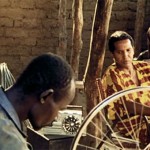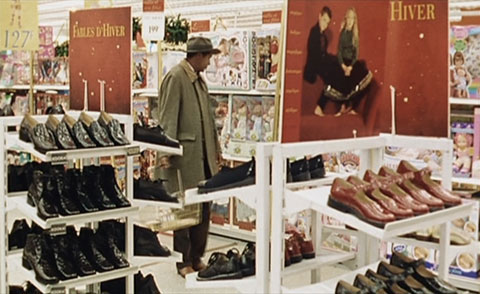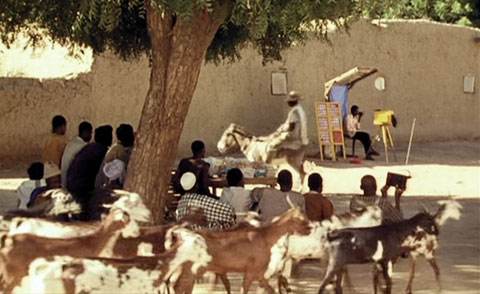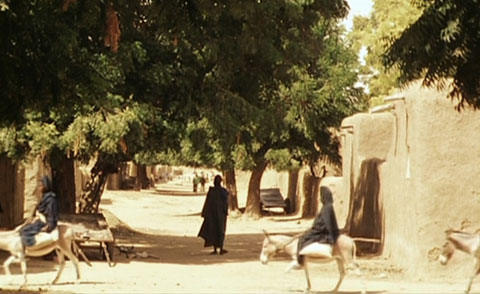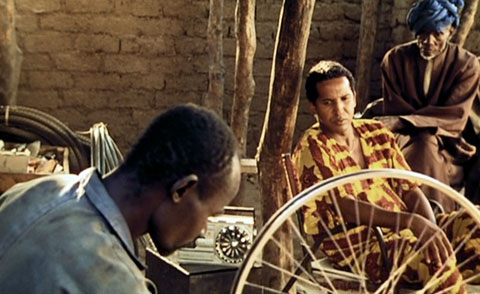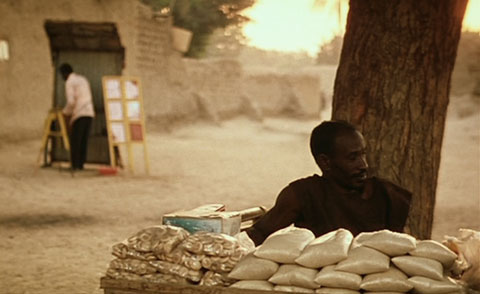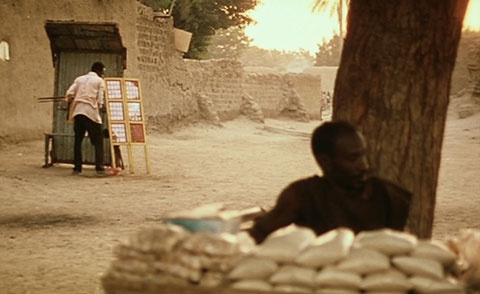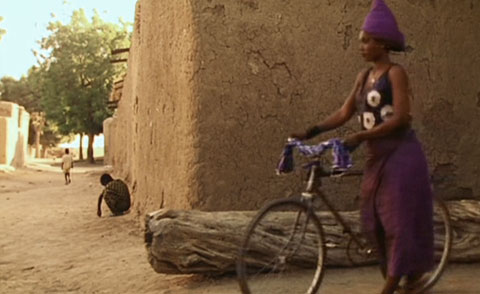Dir. by Abderrahmane Sissako
“There is an organic unity to village life, but it is both fragile and alienating. In this regard Sissako refuses to either promote some pure, untouched pre-modernity or to mourn for some lost social integration. Sissako’s encompasser always has to make room for those transnational nomads who can’t quite pass muster with traditionalism, and whose presence causes the seemingly organic community to slowly reveal its fissures.”
Here, Michael’s actually discussing Waiting for Happiness, Abderrahmane Sissako’s second feature film, but the tenuous unity of village life that he notices there is represented even more clearly, I think, in the earlier film, Life on Earth. As Michael points out, the film opens with a self-consious allusion to Godard — a long tracking shot along shelves and shelves of food in a French supermarket. It’s in the next shot, though, that Sissako establishes the visual template for his film. We first see racks of shoes in the foreground and shelves of toys behind them. Then Sissako himself appears. We eventually learn that he is a student abroad; his trip back home motivates the film’s plot, and his letter to his father provides the voice-over narration. When Sissako enters the frame, he moves from left to right, splitting the two depths of field that were established initially.
The same visual motif continues after Sissako has left the consumer wonderland of Paris and has returned to his Mali village. In the shot below, Sissako again establishes two depths of field (the group of men sitting below the shade tree and the photographer in the distance) before introducing horizontal movement (first the goats moving left to right, then the man on donkey moving right to left).
Then a new variation: Again the donkeys establish horizontal movement and depths of field, but now a figure moves on the perpindicular line, walking toward the camera.
Frequently, characters are also staged on various planes of action. In the example below, the man in the foreground and his bicycle wheel are on the horizontal, the man in the back is on the perpendicular, and Sissako, the outsider in the middle ground, breaks the grid at a 45-degree angle.
Finally, near the end of Life on Earth, Sissako includes two back-to-back, single-shot sequences that are the culmination of his visual strategy. In the first, we see two merchants at two depths of field. Sissako slowly pulls focus to create a relationship between the men.
In the second, he again creates two depths of field, along with the expectation that he will again pull focus. Instead, a third character bisects the planes, and we watch him walk off into the fuzzy distance until Nana stands up and exits on the horizontal.
I don’t recall there being any dialogue in any of the shots I’ve captured here. (Nearly all of the film’s few conversations take place in the small post office, where villagers try in vain to communicate with the outside world via a single telephone.) Sissako’s camera, however, is obsessed with relationships and with the geography (geometry?) of social interaction.
